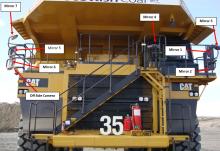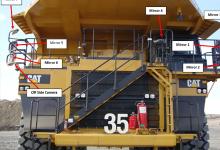
When it was discovered Scotland’s thin road surfacings were wearing thin, it was decided to develop a new specification
A new surface course specification for roads has been developed by
This, it is claimed, should help deliver significant improvements in material durability, which ultimately will result in less disruption to road users generated by road construction and maintenance.
Following on from European developments in asphalt technology in the mid-1990s, a change in the type of road surfacing, known as thin surfacing, was introduced across the UK.
These proprietary surfacing systems came with a range of benefits including improved deformation resistance, speed of application, noise and spray reduction and changes to traffic management practices.
Initially welcomed by both the road industry and road users in Scotland, by 2006 incidents were being reported of surface deterioration after only short periods in service.
Safety concerns were also expressed due to a possible loss of skid resistance.
In response to this, Transport Scotland commissioned a review of the performance of thin surfacings (as laid on the Scottish trunk road network) by TRL, which provides independent and impartial world-class research, consultancy, testing and certification for all aspects of transport.
The review encompassed site inspections to identify and quantify surfacing defects and a series of workshops to discuss the findings and to find possible remedies to improve the performance of the surfacing.
Out of the workshops the Transport Scotland Pavement Forum (TSPF) was established, and it implemented annual monitoring of the surfaces, to provide an estimate of service life based on performance.
This resulted in a major recommendation that efforts should be made to reduce the open nature of the materials by specifying denser binder rich mixes and smaller stone sizes.
A series of road trials followed using different sized aggregates based on German specifications and experience where the use of smaller aggregate sizes and higher binder content are used to enhance material durability.
Study visits were also made to Germany both before and after the trials, initially to gain knowledge and then to refine the development of a new surface course specification for Scotland.
After studying Germany’s stone mastic asphalt (SMA) surfacings, the road trials in Scotland comprised eight SMA materials using nominal aggregate sizes of 14mm, 10mm, 8mm and 6mm, with four of the trial surfacings being treated with grit to improve early-life skid resistance.
As a result of this work, Transport Scotland has been able to give final approval to a new surface course specification for the trunk road network in Scotland, of which the key elements are strict grading requirements to ensure the correct extent of gap grading; high polymer modified binder (PMB) content; maximum air void content; gritting of all new surfaces; the addition of cellulose fibres, and performance-based, in-service skid resistance requirement.
The decision to develop the specification is based on SMAs proven track record in Germany, where many of the roads remain in excellent condition after more than 20 years’ service. The new Scottish specification and guidance is therefore based on the German specifications, practice and experience.
It marks a step change in approach for specifying surfacing material and should provide key benefits in terms of material durability and value for money, something to be welcomed at a time of reduced funding, says Transport Scotland.
“And for road users, this means they should suffer less disruption to the network caused by construction and maintenance works.”
Through its four operating companies, Transport Scotland safeguards the structural integrity of the trunk road network. Its ongoing maintenance regime typically includes replacement of the carriageway (reconstruction), the surface (resurfacing) and reinstating the skidding resistance of the surfacing (surface dressing). The new specification was rolled out in 2011 to the four operating companies responsible for maintaining the Scottish network.
A report published by TRL (TRL670) describes the development of the new surface course specification and is available for purchase from TRL’s online store (%$Linker:








